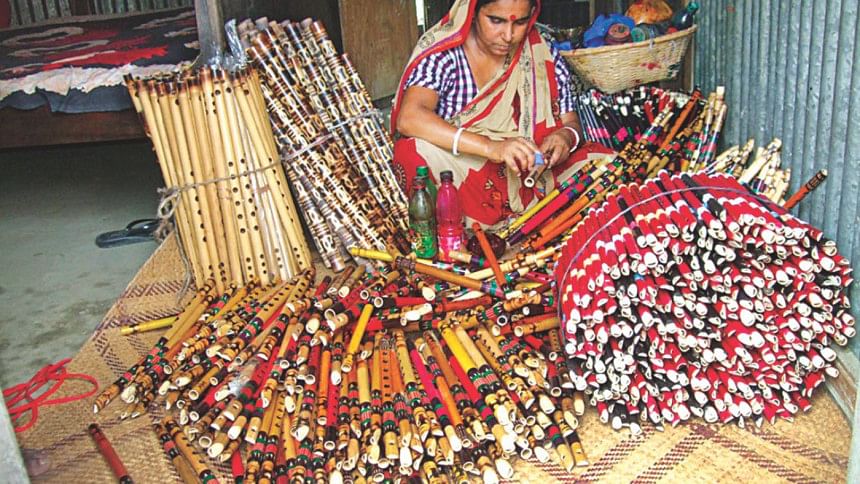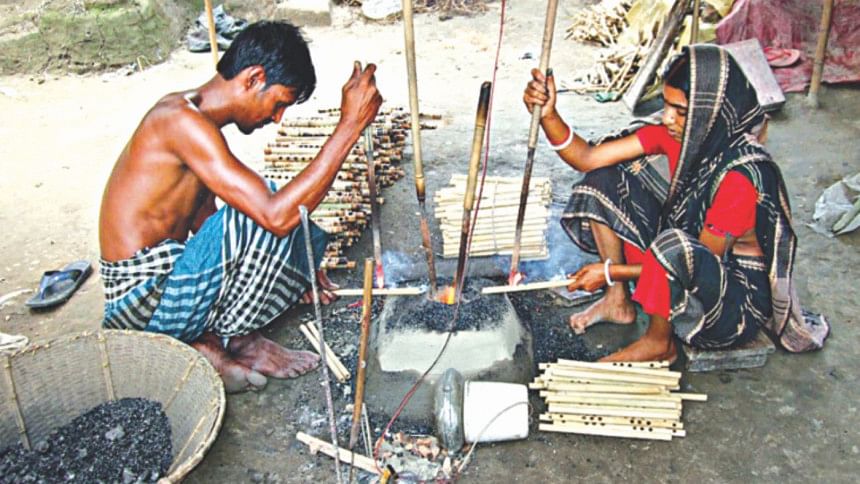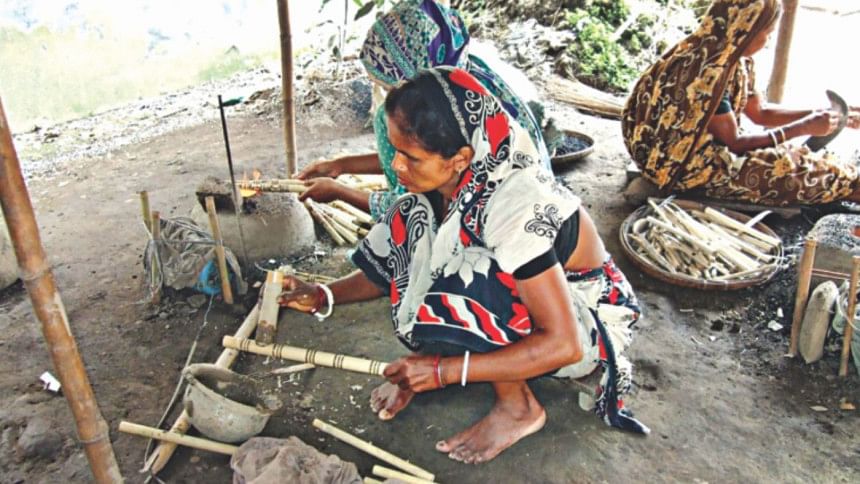FLUTE plays export music

The sound of flutes tuning and playing is nothing new to Sreemoddi village in Comilla's Homna upazila. Over a century ago two expert flute craftsmen, Kokil Das Bairagi and Deen Bandhu, reached the village from India to ply their trade. Locals say they made up to a hundred flutes while there and sold them door to door. What is more certain, the two flute makers, who were also accomplished flautists, planted the seeds of a village industry that has endured and flourished. Today, Sreemoddi flutes are exported to as many as 25 countries.
“Our flute making tradition follows the footsteps of Kokil and Deen,” says elderly flute maker, Rui Das. At least 40 families in the village have been making flutes for more than 120 years, he says. Elderly men and women, school children in their spare time, all are involved in crafting flutes. The village women specialise in piercing the flute holes, along with washing, drying and colouring the instruments.
“After independence the flute market was good,” Rui Das recalls, “In the Bangla month of Chaitra wholesalers would arrive from Dhaka's Chowk Bazar and they used to buy as many as 1.5 lakh flutes at a time. Those wholesalers took orders by letter, from Chittagong, Mymensingh, Khulna and elsewhere. Flutes from this village were made to fill their orders and supplied across the country by launch and train.”

Neighbour Niranjan Chandra Sarker also makes flutes. “We use muli bamboo,” he says. “Normally the flutes are made to the four phases of the harmonium scale and measure around twenty inches. A flute will have three to seven holes.” Tota, mukh, aar, veen, balloon, classical, khandani, mohan and natural: eight different types of flute are available.
“To make a flute we first cut and dry the bamboo,” says another flute maker Anil Chandra Biswas. “Later the bamboo's bark is peeled. We add clay motifs and lightly burn the flute so that when the mud falls off the motifs are visible. Then the holes are measured and marked in pencil before being punctured with pointed iron rods. After washing the flute it is packed, ready for delivery.”
“I have been buying flutes from this village for the last 40 years,” says Nihar Sarker, a trader from Gazipur. “Flutes are especially popular with young people and children.” But he also laments the encroachment of plastic toys which has seen demand for bamboo flutes reduce. The popularity of video games has similarly diminished domestic flute demand among younger generations.
Yet there is a bright star on the horizon: the export market. “Foreign buyers already place orders through locally-based businesses like mine,” says wholesaler Subrata Saha from Araihazar in Narayanganj. “I receive orders from abroad every year, sometimes specifying the flute motifs they want.” Around one crore flutes per annum are crafted in this remote and serene village destined for export to countries across Europe as well as the United States.

“People should patronise the Sreemoddi flute making business,” says Homna Upazila Nirbahi Officer Quazi Shahidul Islam, “and if the artisans believe soft government loans can help them to expand their industry of course we will help them.” He says he hopes to discuss with the flute makers of Sreemoddi what kind of cooperation would be most helpful.


 For all latest news, follow The Daily Star's Google News channel.
For all latest news, follow The Daily Star's Google News channel. 



Comments